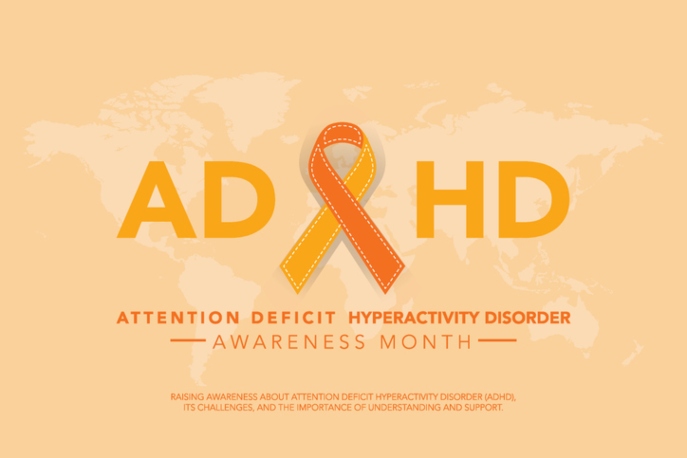Photo Credit: Yastaj
In 2004, the US Senate designated ADHD Awareness Day as a national holiday. This designation was directly tied to how mental health organizations rallied around spreading awareness about the mental health condition. Today, the month-long occurrence “ADHD Awareness Month” is run between three organizations: ADHD Coaches Organization, Attention Deficit Disorder Association (ADDA), and Children and Adults with Attention Deficit Hyperactivity Disorder (CHADD).
On the 20th anniversary of ADHD Awareness Month, we can’t help but reflect on how far we’ve come in awareness. The Centers for Disease Control and Prevention (CDC) revealed in their 2022 National Survey of Children’s Health that there’s been a notable increase in ADHD diagnoses amongst children and teens (one in nine children or 6.5 million children and teens with an ADHD diagnosis nationwide). This can be attributed to increased awareness of the disorder and more parents observing their children’s symptoms while they attended classes at home during the pandemic.
While minors are beginning to get more of the attention and understanding they need during the school day, adults who missed out on that childhood intervention are struggling. Clinicians are more than twice as likely to diagnose boys as girls, leading to many women experiencing unchecked and untreated ADHD symptoms that can dramatically impact their adult lives. Additionally, adults with ADHD carry the burden of their internalized stigma against the disorder and a fear that they will be judged, mistreated, or discriminated against due to their ADHD status. While there is little research about ADHD adult mistreatment in the workplace, we do know that discrimination against neurodivergent employees is all too common.
People with ADHD occupy many spaces in public life, including at the workplace. It is critical that employers strive to understand their employees with ADHD and provide reasonable accommodations to help them make the most out of their workday. Below are some of our tips for employers.
Be Aware of the Types of Required Accommodations Under the Americans with Disabilities Act (ADA)
ADHD is regarded as a disability under the ADA, and as such people living with ADHD have the right to certain protections and obligations. Please review this blog by ADDitude, which discusses those protections and obligations from the perspective of employees living with ADHD and managers of these employees.
Invest in ADHD-Friendly Technologies
Employees may have difficulty keeping attention on one task, and there are certain technologies that could help improve their workflow like white noise or noise-canceling headphones, scheduling apps, and text-to-speech or speech-to-text software. ADHD, like other disabilities, is not the same for everyone, so encourage employees to communicate with their supervisors about which technologies would best help them accomplish their tasks.
Allow Employees to Modify Their Workspace
For some employees with ADHD, the workspace they were provided might have too many distractions. If they ask, see if it is possible for them to work in a quieter, lower-activity area. Also, assist them if they would like larger clocks to keep track of time or visual prompts like sticky notes or checklists to keep track of tasks.
Offer Flexible Scheduling
If an employee works better at certain times of the day, consider adjusting start and end times of their workday (as long as their total hours worked still fits within job obligations). Additionally, people with ADHD lose sense of time, which is why more frequent, brief breaks could allow for their brains to reset and take on their tasks with renewed vigor. The Pomodoro Technique (working 25 minutes followed by a 5-minute break) is one option to consider.
Encourage Managers to Adjust Their Practices
When managers get to know their subordinates, they learn that everyone operates on a different style and work schedule. Encourage supervisors of employees with ADHD to adjust their practices to the needs of those employees. Examples of this include providing meeting notes instead of verbal instructions, breaking down large tasks into smaller steps, and, if possible, offering more frequent check-ins.
Consider Referring Employees to or Working Directly with ADD/ADHD Coaching Services
Employers do not need to be experts on working with people with ADHD. If an employee with ADHD is struggling in their role, consider working with ADHD Coaches Organization to either provide the employee with 1:1 coaching to assist them in their professional development or have discussions with the organization on a managerial level to figure out what areas the workplace can improve for neurodivergent employees today and tomorrow. Also, when looking for new candidates, consider using the Job Accommodation Network to expand the organization’s job posting reach to applicants with disabilities.
This ADHD Awareness Month, we remind ourselves of all the awareness that has been spread and how far we still have to go with regard to treatment and reducing stigma. We look forward to a future where children and adults with ADHD are understood and accepted in a broader culture that accommodates them with ease.
RALIANCE is a trusted adviser for organizations committed to building cultures that are safe, equitable, and respectful. RALIANCE offers unparalleled expertise in serving survivors of sexual harassment, misconduct, and abuse which drives our mission to help organizations across sectors create inclusive environments for all. For more information, please visit www.RALIANCE.org.

